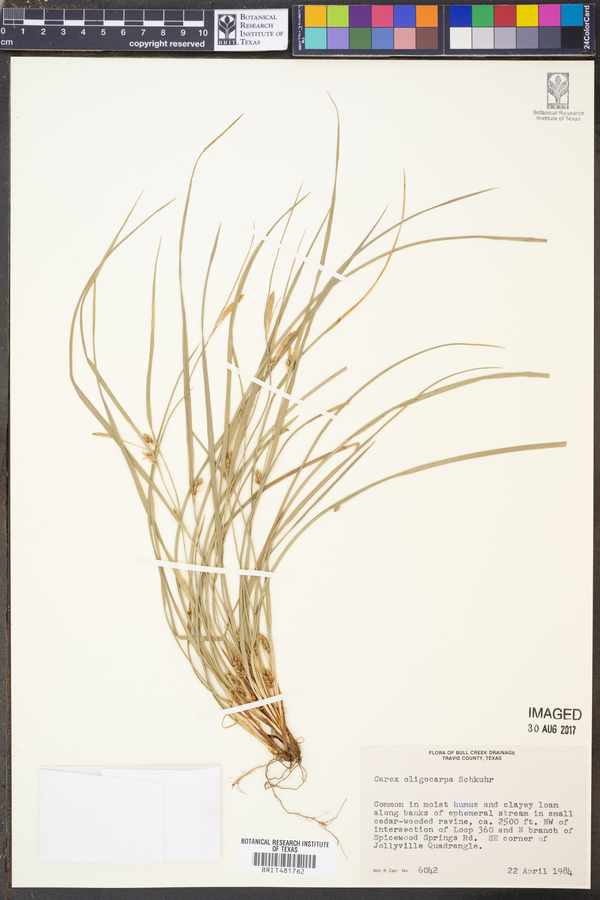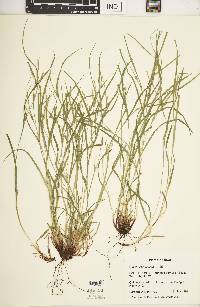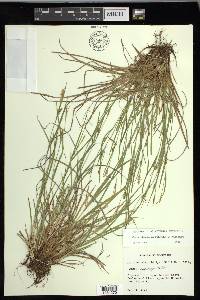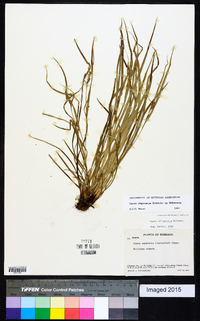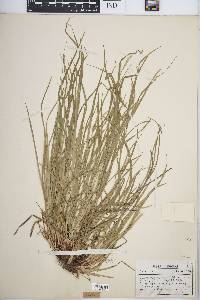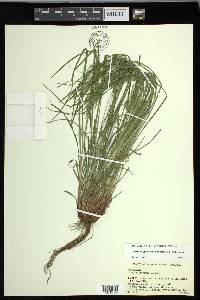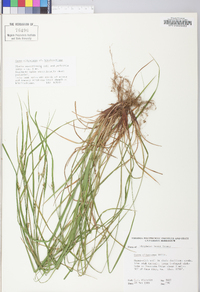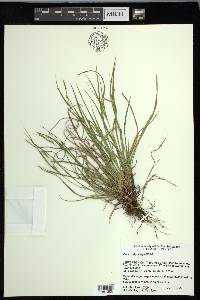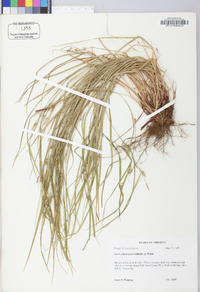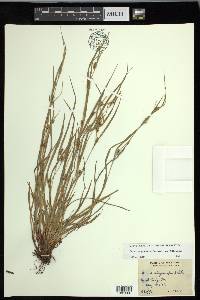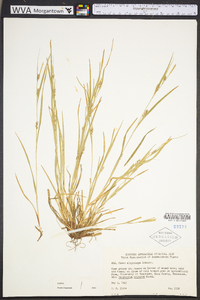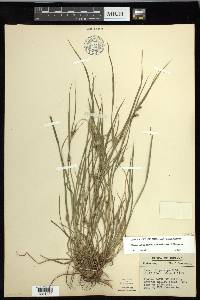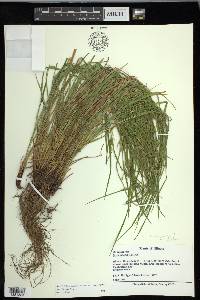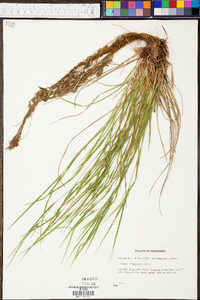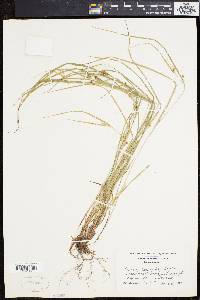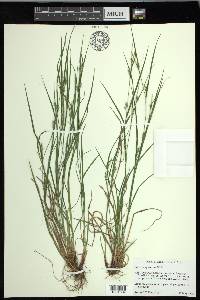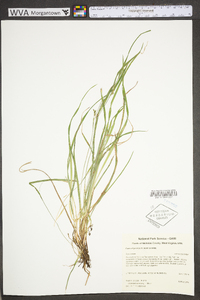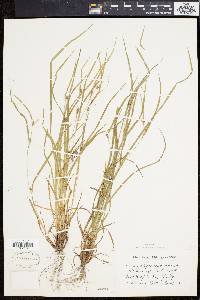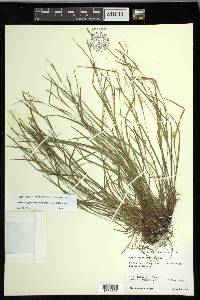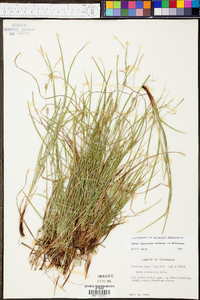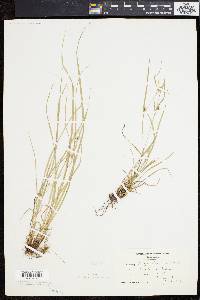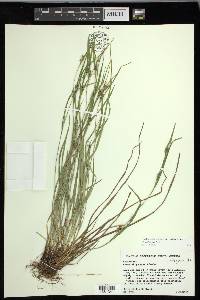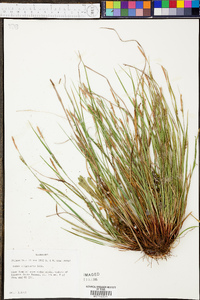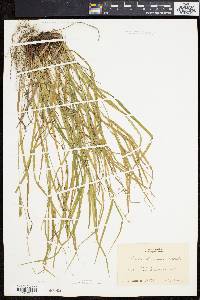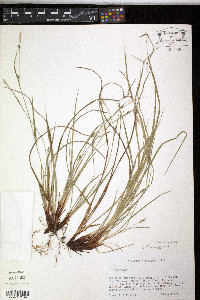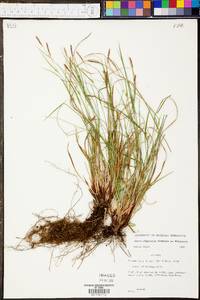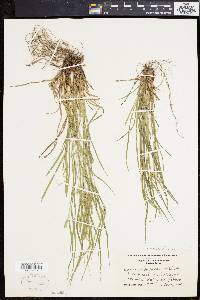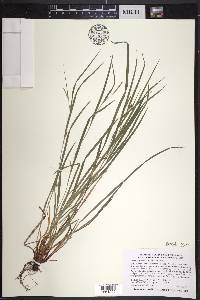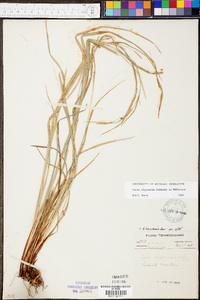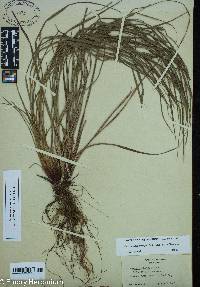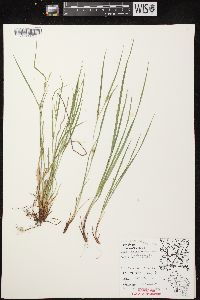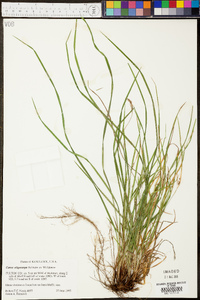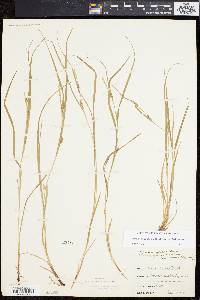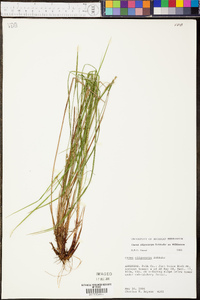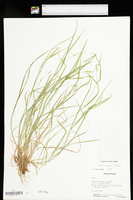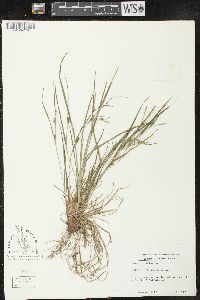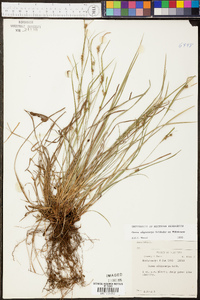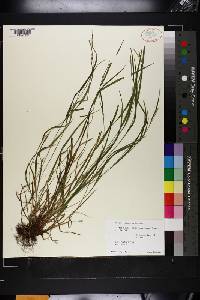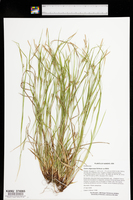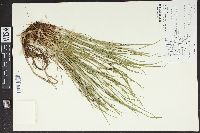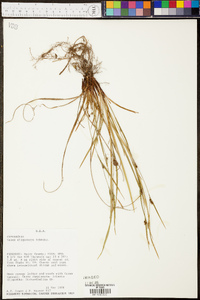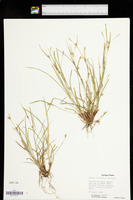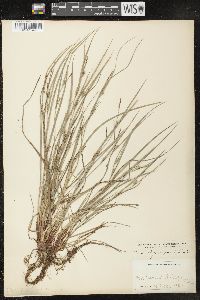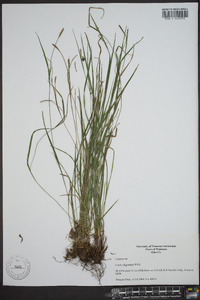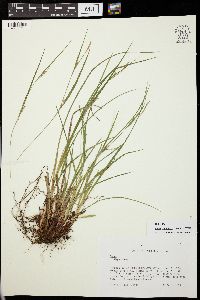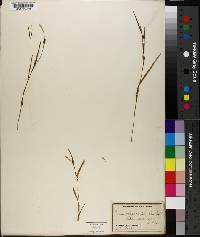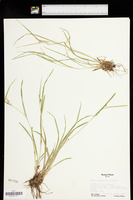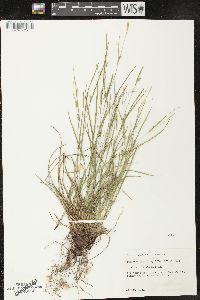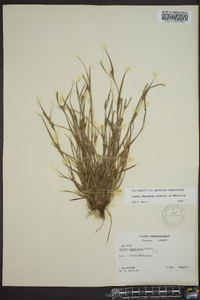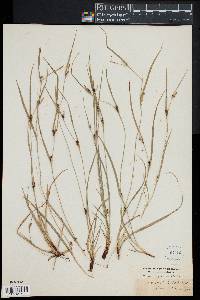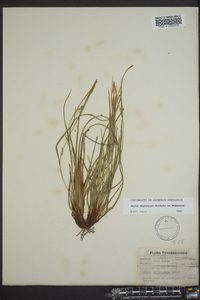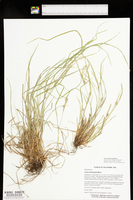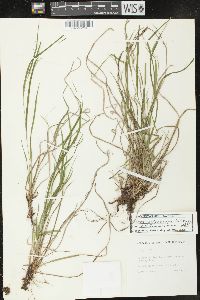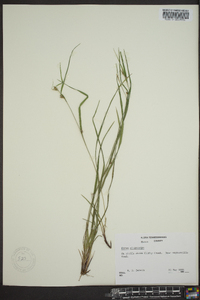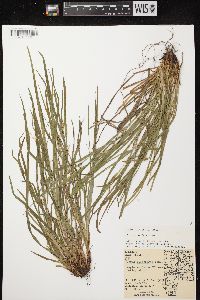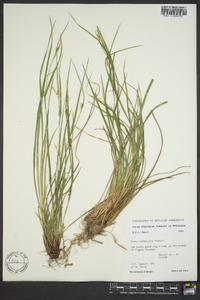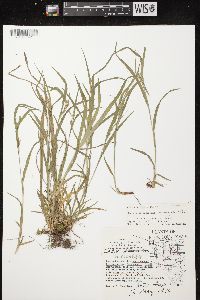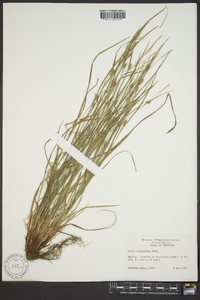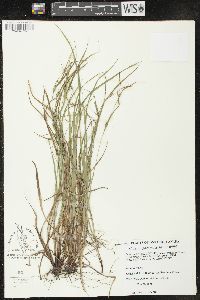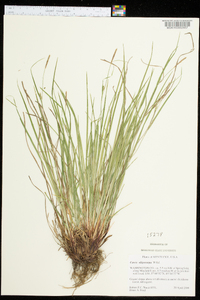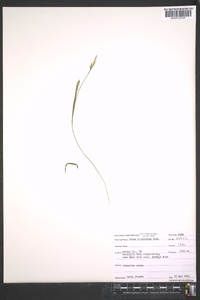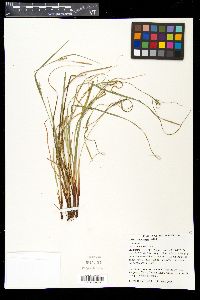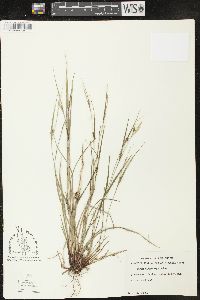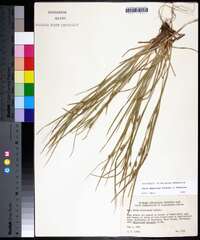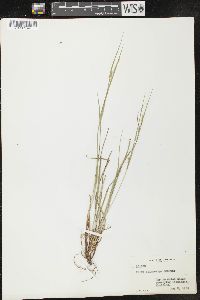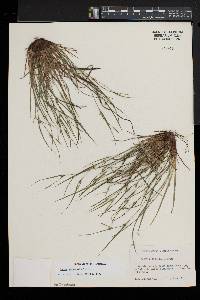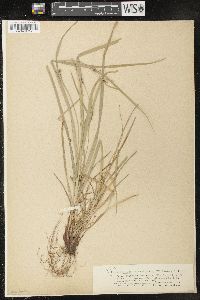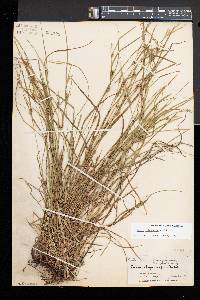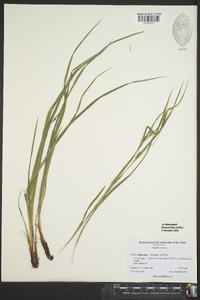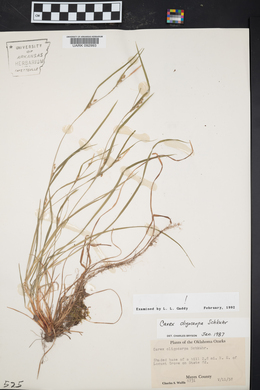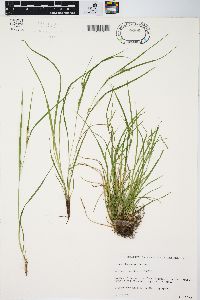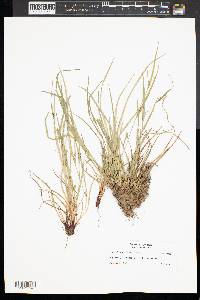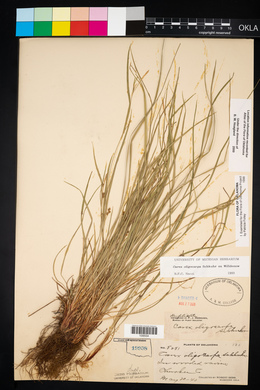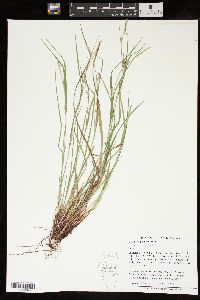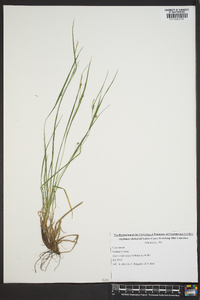
|
|
|
|
Family: Cyperaceae
eastern few-fruit sedge, more...Richwoods Sedge
[Carex oligocarpa var. sartwelliana Dewey] |
Plants densely cespitose; rhizome internodes 0.2-6(-8) mm, 1.6-2.2 mm thick. Culms strongly purple-red to 3.2-8.8 cm high at base, 10-55 cm; longest vegetative shoots 0.88-1.4 times as long as longest culms. Leaves: sheaths glabrous; blades green, widest blades (1.8-) 2.4-4(-4.6) mm wide, smooth abaxially. Inflorescences 0.46-0.94(-0.99) of culm height; peduncles of lateral spikes barely scaberulous or smooth; peduncles of terminal spikes 2.6-113 mm, barely to much exceeding lateral spikes; proximal bract with sheath tight, abaxially glabrous, sheath front convex, elongated (0.8-)1.1-4.0 mm beyond apex; ligules 0.8-4.1(-6.4) mm; blade uniformly green; distal bract usually much exceeding terminal spike. Spikes 3-5, widely separate or distal 2-3 spikes overlapping; lateral spikes pistillate with 2-8(-10) perigynia, (4-)9-19 × 3.8-7.5(-9.2) mm, ratio of spike length (in mm) to flower number = 1.5-3.8; terminal spikes (7-)14-32(-45) × 1.1-2.3(-3) mm. Pistillate scales 2.8-6.8 × 1.5-2.4 mm, margins whitish, entire, apex with awn 0.7-4.1 mm. Staminate scales 4-5 × 1.3-1.6 mm. Anthers 2.8-3.5 mm. Perigynia distichously imbricate, 51-67-veined, unwrinkled, narrowly obovoid-ellipsoid, obtusely triangular in cross section, 3.7-4.7 × 1.6-1.9(-2) mm, (1.8-) 2.2-2.6 times as long as wide, dull, base gradually tapered, abruptly contracted; beak straight, 0.4-1.2 mm. Achenes obovoid, 2.8-3.4 × 1.5-1.8 mm, tightly enveloped by perigynia; stipe straight, 0.3-0.6 mm; beak straight, (0.05-)0.2-0.4(-0.5) mm. Fruiting spring-early summer. Mesic or dry-mesic deciduous forests, usually in calcium-rich loams on rocky slopes above streams; 40-800 m; Ont., Que.; Ala., Ark., Conn., Del., D.C., Ga., Ill., Ind., Iowa, Kans., Ky., Md., Mass., Mich., Minn., Miss., Mo., Nebr., N.J., N.Y., N.C., Ohio, Okla., Pa., Tenn., Vt., Va., W.Va., Wis. Carex oligocarpa is frequent, particularly in the Midwest. When C. oligocarpa grows with C. planispicata, it usually grows farther upslope than C. planispicata, apparently in drier soils. The two species do grow intermingled in some localities.
Densely tufted, 2-8 dm, purplish at base; lvs 2-4 mm wide, usually surpassing the stems; sheaths glabrous; staminate spike 1-3 cm, on a peduncle ca as long as the uppermost pistillate spike; bracts glabrous or rarely minutely granular-puberulent; pistillate spikes 2-4, 0.5-2 cm, very loosely fld; pistillate scales ovate, 3-6 mm, all or at least the lower with an awn longer than the body and usually longer than the perigynia; perigynia 7-12, alternately arranged, fusiform or slenderly ellipsoid, 3.5-5.4 mm, nearly straight, tapering almost equally to both ends, finely many-nerved; achene trigonous, filling the perigynium, with a minute straight beak. Moist rich woods; Mass., Vt., s. Que., and Ont. to Minn., s. to Fla. and Tex. Gleason, Henry A. & Cronquist, Arthur J. 1991. Manual of vascular plants of northeastern United States and adjacent Canada. lxxv + 910 pp. ©The New York Botanical Garden. All rights reserved. Used by permission. From Flora of Indiana (1940) by Charles C. Deam Common in rich woods except in the three northern tiers of counties where it is rare. It is a plant of calcareous soils and its favorite habitats are moist, wooded ravines and beech or beech-maple slopes. Occasionally it occurs on dry slopes and in open woods. ...... Indiana Coefficient of Conservatism: 8 Wetland Indicator Status: n/a |
This project was made possible in part by the Institute of Museum and Library Services [MG-70-19-0057-19].
Powered by Symbiota

